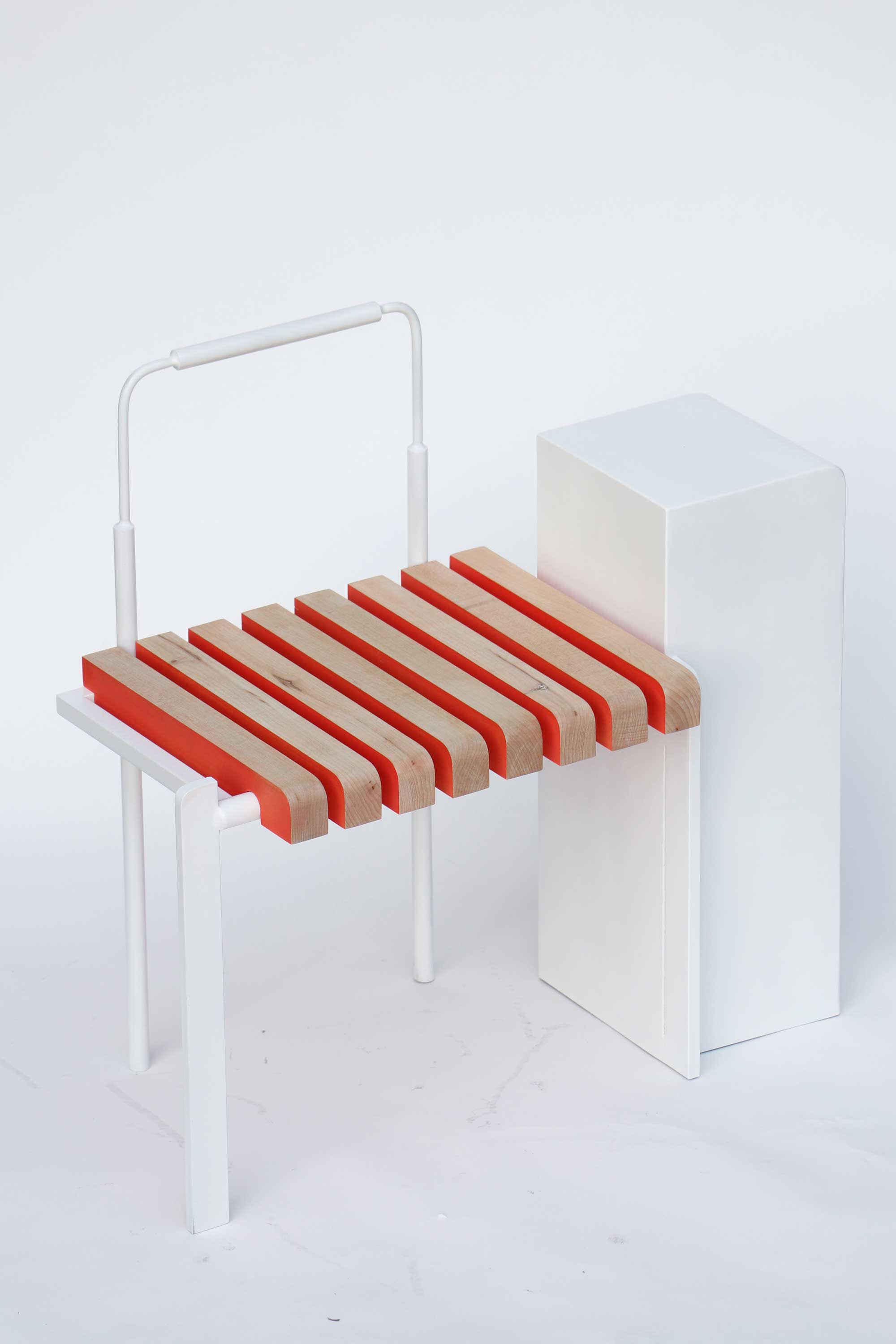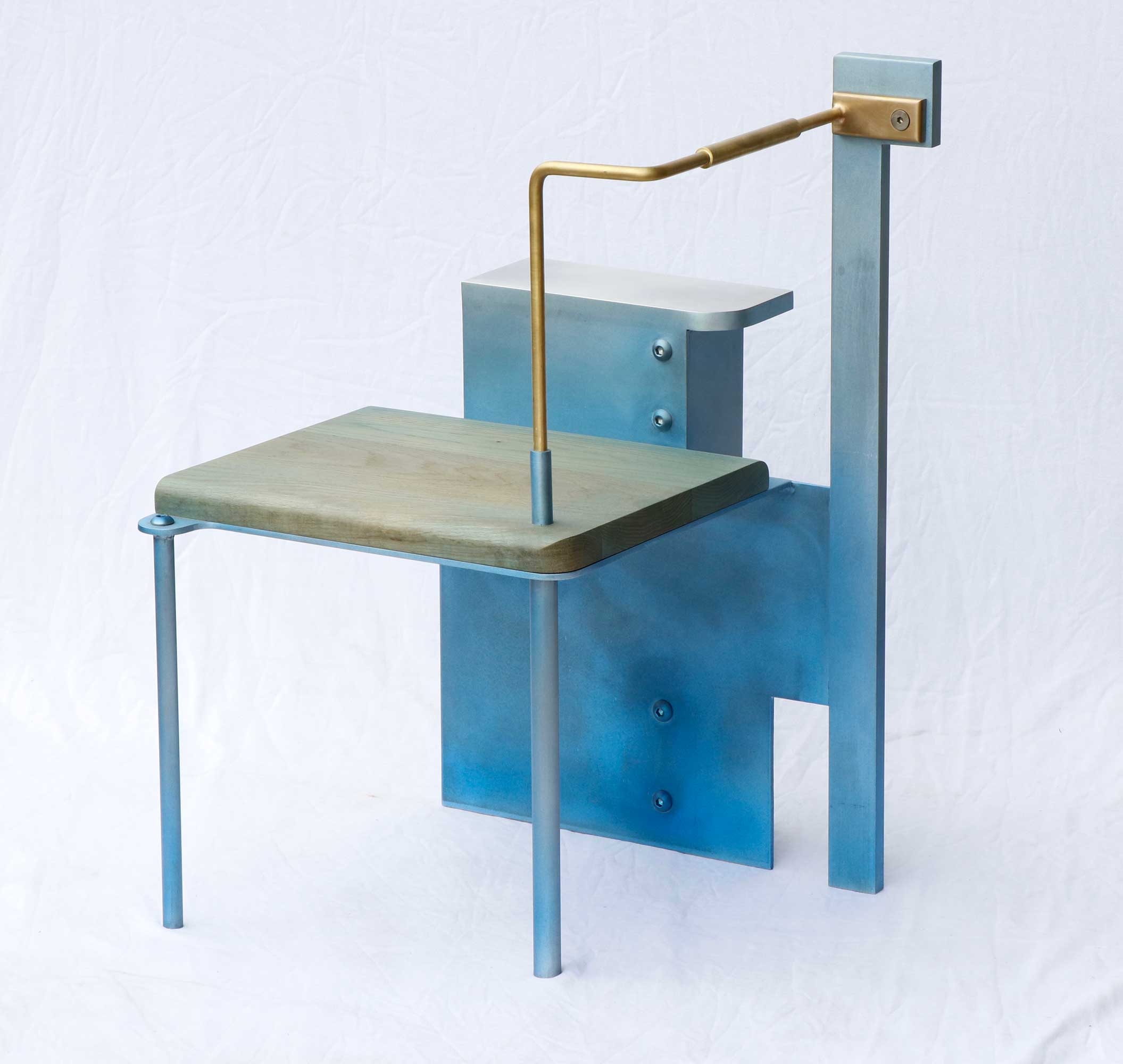“If I fail to complete a thing as planned, I am disappointed and may even feel worthless. In these furniture pieces, that tension is put on display, it is celebrated. They are a mix of success and failure in one object, an intentional failure stitched together with successful bits of machines, buildings, furniture,” says Malcolm Majer about his ongoing Chair series. The American designer manipulates salvaged strips and pieces of aluminium, steel and wood to create chairs that bend and curve to form peculiar and non-traditional forms, often as a satirical commentary on the idea of trying to create a perfectly useful object. These pieces serve both as an expression of the artist’s exploratory process and as objects that intrigue and confound the viewer with their spontaneity and originality.

Malcolm Majer is a furniture designer and metal fabricator based in Baltimore, USA. With an organic and free-flowing approach towards fabrication of furniture items, he crafts sculptural pieces that transcend the conventional notions associated with furniture design. Although formally trained as a furniture designer, Majer sidelined his practice in favour of a metal fabrication business in 2007. However, driven by the recurring desire for crafting creative objects that could capture his imaginations just as well as his several successful and failed creative attempts, he started making furniture once again in 2017.

In his latest additions to the ongoing collection, Majer attempts to engage with the setting of office spaces. Unlike his previous pieces, Chair 14 and Chair 15 are particularly spartan, with fewer colours decorating their surface and lesser bends defining their structure and form. For his Chair series, Majer gathered scraps discarded from his metal fabrication practice and began to play with colours, materials and shapes to create objects that, despite appearing as bespoke ornamental pieces, fulfil the utilitarian role associated with chairs. “I see this work as if machinery, architecture and furniture were accidentally scrambled in a matter transporter. The result is a confusing object, something highly refined but approaching uselessness,” says Majer about his design practice. His works have been displayed at various creative events and design fairs around the world such as the AD Design Show in New York and galleries in Baltimore, Provincetown, Chicago, Paris and Brussels.

Majer uses a variety of different paraphernalia salvaged from discarded bits and pieces from larger construction and fabrication projects. It serves as a sustainable choice for crafting objects, while also posing as an economical and freer practice that leaves ample room for creativity, experimentation and innovation. Standing in heavy contrast against his day job as a metal fabricator, the craft of moulding steel, wood and aluminium according to his whims and desires quenches the designer's creative hunger.
By discarding pencil and paper during the initial part of his creative process, Majer gives in to spontaneity and discards any forethought at all. He also steers away from the usage of extensive repetition in his work in order to avoid a loss of energy. By doing this, the chairs are able to function emotionally first and ergonomically later.

The designer accumulates reclaimed materials from other projects and begins the process of creating each chair by organising and composing these materials against each other. By relying on intuition to help guide his process, he creates obscure pieces that make no sense pragmatically but appear like cohesive and well-composed pieces in entirety. Designed to mimic the illogical aesthetic that is often associated with non-contextual architectural or mechanical details of a larger structure, they also encapsulate a childish charm, perhaps on account of their resemblance to the randomly juxtaposed blocks that we created as kids.
Keeping in mind that chairs are pieces of furniture that demand a direct relationship with the user, almost all chairs by Majer can be approached from all directions. This non-traditional process of furniture creation using the most austere industrial design elements lends these pieces a certain visibility in the spectrum of modernism.






 Sign in with email
Sign in with email













What do you think?